Laser Dentistry Treatment: Targeted, Safe, Transformative Care
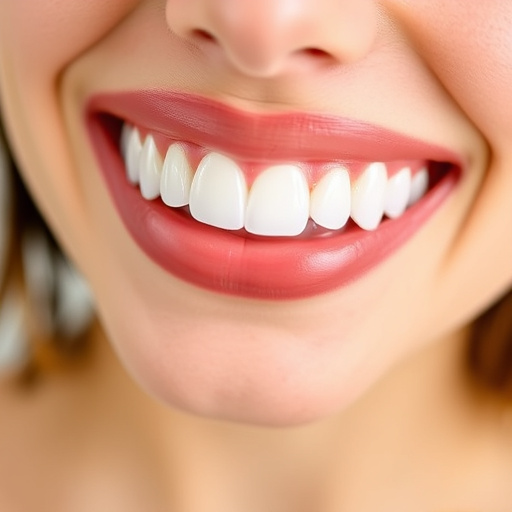
Laser dentistry treatment revolutionizes dental care with precise, safe interactions using focused l…….
In the ever-evolving landscape of dental care, laser dentistry treatment has emerged as a game-changer, promising precise, efficient, and minimally invasive procedures. This cutting-edge approach utilizes concentrated light energy in the form of lasers to diagnose and treat various oral health conditions, from gum disease to tooth decay. As technology advances, laser dentistry is gaining popularity worldwide, attracting the attention of dental professionals and patients alike. This comprehensive article aims to guide readers through the intricacies of laser dentistry treatment, exploring its benefits, applications, global impact, and future prospects. By delving into these aspects, we will uncover why this innovative therapy has become a significant focus in modern oral healthcare.
Definition: Laser dentistry treatment involves the strategic application of lasers to interact with hard and soft tissues within the mouth. This technology offers a unique approach to dental care by providing precise cutting, sculpting, and vaporization capabilities, all while minimizing trauma to surrounding areas.
Core Components: At its heart, laser dentistry treatment comprises several key elements:
Lasers: The primary tool is a dental laser, which emits light at specific wavelengths. Different lasers are used for various procedures depending on their power levels and light characteristics. Common types include Er:YAG (erbium-doped yttrium aluminum garnet) and Diode lasers.
Handpieces: These are devices that transmit the laser energy to the treatment site. Handpieces come in various designs, catering to different dental procedures. For instance, a high-speed handpiece is used for drilling while a low-level laser is employed for tissue healing and gum treatments.
Wavelengths and Power Levels: Lasers operate at specific wavelengths, allowing them to interact with different tissues. Power levels determine the intensity of the laser beam, which can range from low (for gentle gum treatments) to high (for precise cutting).
Application Techniques: Dental professionals use various techniques depending on the treatment goal. This includes ablation (removing tissue), vaporization (evaporating tissue), and photo-thermally activating materials for healing or whitening.
Historical Context: The concept of laser dentistry traces back to the 1960s when early lasers were used in dental practices, primarily for hard tissue surgeries like tooth extractions and bone surgeries. However, these early lasers had limited applications due to their high power levels and lack of precision. Over time, technological advancements led to the development of more sophisticated dental lasers with improved safety features and precise control. The 1990s marked a turning point when laser dentistry began to gain traction for various soft tissue procedures, such as gum disease treatment and tooth whitening. Today, laser technology continues to evolve, offering dentists a versatile tool for numerous clinical applications.
Laser dentistry treatment has made significant inroads internationally, with varying levels of adoption and integration into dental practices across regions. Here’s an overview of its global impact:
North America: The United States and Canada have been at the forefront of laser dentistry technology, with a high rate of adoption among dental professionals. Advanced laser systems are widely available, and continuing education programs play a vital role in keeping dentists updated on the latest techniques.
Europe: European countries like Germany, the UK, and France have shown significant interest in laser dentistry, particularly for aesthetic procedures and soft tissue treatments. Strict regulatory frameworks ensure that only approved lasers are used, maintaining high safety standards.
Asia Pacific: The Asia-Pacific region, including China and Japan, is witnessing rapid growth in laser dentistry. Increasing disposable incomes and a growing emphasis on oral health have fueled this trend. Moreover, the availability of affordable, high-quality laser equipment has contributed to its popularity.
Latin America and Middle East: These regions are also experiencing an upsurge in laser dentistry treatment, driven by advancements in dental tourism and local healthcare infrastructure improvements. Brazil, for instance, has become a hub for dental procedures, attracting patients from around the world.
Key trends shaping the global landscape include:
Aesthetic Applications: Laser dentistry is increasingly being used for cosmetic procedures like teeth whitening, gum contouring, and crown lengthening, catering to the rising demand for aesthetically pleasing smiles.
Minimally Invasive Surgery: The ability to perform precise, bloodless surgeries makes laser dentistry an attractive option for treating oral cancers, cysts, and impacted wisdom teeth.
Regenerative Medicine: Low-level lasers are being explored for their potential in tissue regeneration and bone healing, offering new possibilities for periodontal therapy and jaw reconstruction.
Remote and Rural Care: In areas with limited dental access, laser dentistry can be deployed in portable devices, enabling remote and rural communities to receive specialized care.
The economic implications of laser dentistry treatment are multifaceted, impacting both healthcare systems and individual practices.
Global Market Size: According to a 2022 report by ResearchAndMarket, the global dental lasers market size was valued at USD 765 million in 2021 and is projected to grow at a CAGR of 9.5% from 2022 to 2030. This growth indicates a significant demand for laser dentistry technology.
Regional Variations: The market varies across regions, with North America dominating due to its early adoption and well-established dental infrastructure. However, the Asia-Pacific region is expected to witness the highest growth rate, driven by increasing healthcare spending and a growing middle class.
Practice Acquisition: Dental practices invest in laser dentistry equipment as a strategic move to enhance their service offerings and attract a wider patient base. This can include purchasing state-of-the-art lasers, handpieces, and accessories.
Research and Development: Companies specializing in dental lasers allocate significant resources for research, aiming to develop more efficient, user-friendly, and cost-effective devices. These investments drive technological advancements.
Training and Education: Dentists and dental specialists often invest in continuing education programs focused on laser dentistry techniques to stay current with the latest practices and maintain high treatment standards.
Revenue Generation: Laser dentistry treatments, especially cosmetic procedures, can be lucrative for dental practices, attracting patients seeking advanced, precise care. This contributes to the overall revenue of the dental industry.
Cost Efficiency: In some cases, laser dentistry can reduce treatment costs by minimizing the need for extensive surgeries or lengthy recovery periods. This is particularly relevant for periodontal therapy and minor oral surgeries.
Healthcare System Impact: The integration of laser dentistry may influence healthcare systems by potentially reducing waiting times and the need for complex procedures performed in hospital settings, thereby streamlining dental care delivery.
The field of laser dentistry has witnessed remarkable technological breakthroughs, driving its evolution and expanding its applications. Here are some significant advancements:
Er:YAG Lasers: These lasers have become a workhorse in dental practices due to their versatility. They are effective for hard tissue surgeries, such as tooth extractions, and soft tissue procedures like gum treatments and teeth whitening. The Er:YAG laser’s ability to penetrate tissues without causing significant heat damage makes it safe for various applications.
Diode Lasers: Commonly used for low-level laser therapy (LLLT), diode lasers promote healing, reduce inflammation, and stimulate tissue regeneration. This technology is valuable in periodontal therapy, oral surgery, and post-extractive care.
Miniaturization and Handpiece Design: Advances in engineering have led to the development of smaller, more ergonomic handpieces, enhancing dentist control and precision during treatments. Miniaturized lasers are also being integrated into portable devices for remote healthcare applications.
Computer-Aided Design/Computer-Aided Manufacturing (CAD/CAM): This technology is revolutionizing dental restoration procedures. CAD/CAM systems enable dentists to design and manufacture custom-fit crowns, bridges, and implants with exceptional accuracy, ensuring optimal patient outcomes.
Integrated Laser Systems: Modern laser dentistry practices often feature integrated systems that combine laser hardware, software, and monitoring devices. These systems streamline treatment delivery and provide real-time feedback, enhancing safety and efficiency.
The regulatory environment surrounding laser dentistry treatment varies globally, reflecting different healthcare systems and standards. Here’s an overview:
International Standards: Organizations like the World Health Organization (WHO) and the International Organization for Standardization (ISO) have established guidelines for medical lasers, ensuring safety and quality. These standards are widely referenced in laser dentistry regulations worldwide.
Regional Regulations: The specific rules differ from country to country. For instance:
United States: The Food and Drug Administration (FDA) regulates laser dental devices, requiring premarket notifications and reviews for new technologies. The FDA classifies lasers based on their intended use, ensuring appropriate safety measures.
European Union: Each EU member state has its regulatory body, but the Medical Devices Regulation (MDR) sets overarching standards for medical devices, including lasers. The European Commission oversees the implementation of these regulations.
Australia and New Zealand: These regions follow the Therapeutic Goods Administration (TGA) guidelines, which cover safety, efficacy, and quality for medical devices, including dental lasers.
Key Considerations: Common themes in laser dentistry regulations include:
Safety and Efficacy: All devices must undergo rigorous testing to ensure they are safe for dental use, with minimal risk to patients.
Labeling and Instructions: Clear product labeling, user manuals, and training materials are mandatory to educate healthcare professionals on proper usage.
Clinical Trials: In some cases, clinical studies may be required to demonstrate the device’s effectiveness and safety in specific applications.
Quality Assurance: Manufacturers must maintain strict quality control processes to ensure consistent product performance.
Despite its numerous advantages, laser dentistry treatment is not without challenges and criticisms that require careful consideration and strategic responses.
Cost and Accessibility: One of the primary concerns is the high upfront cost of laser dental equipment, which can be a significant barrier for dental practices, especially small ones. This issue may limit accessibility, particularly in regions with underdeveloped healthcare infrastructure. To address this, leasing options and government subsidies could be explored to encourage adoption among more practices.
Training and Education: Proper training is essential for dental professionals to use lasers effectively and safely. Insufficient education or experience can lead to treatment failures or complications. Continuing education programs and specialized training courses are necessary to keep dentists up-to-date with the latest techniques.
Regulation and Standardization: While regulations ensure safety, overly stringent rules may hinder innovation and adoption. Striking a balance between regulation and fostering technological advancements is crucial. Standardization of laser parameters and protocols can improve treatment outcomes and reduce variations in care.
Clinical Research: More high-quality clinical studies are needed to validate the long-term effectiveness and cost-effectiveness of laser dentistry treatments for various conditions. Well-designed research will help address criticisms and strengthen evidence-based practice.
The following case studies highlight successful applications of laser dentistry treatment, demonstrating its versatility and impact:
Case Study 1: Laser-Assisted Periodontal Therapy
A 45-year-old patient presented with severe periodontal disease, including deep gingival pockets and bone loss. Traditional surgical procedures were considered invasive and carried a higher risk of complications. The dentist opted for a non-surgical approach using an Er:YAG laser for periodontic debridement. After several sessions, the patient experienced significant improvements in gum health, reduced inflammation, and regrowth of dental bone. This case illustrates how laser dentistry can effectively treat periodontal disease while minimizing patient discomfort and recovery time.
Case Study 2: Laser Teeth Whitening: A Happy Patient Journey
A 32-year-old female patient desired a brighter smile but was hesitant about traditional whitening methods due to sensitivity concerns. Her dentist recommended a laser-guided teeth whitening procedure using a Diode laser. The process involved applying a whitening gel and exposing it to the laser light for precise, controlled bleaching. Within a few sessions, the patient achieved her desired shade, and post-treatment sensitivity was minimal. This case study demonstrates the effectiveness of laser dentistry in meeting patient aesthetic goals while ensuring comfort.
Case Study 3: Remote Laser Dentistry for Underserved Communities
In a remote village with limited access to dental care, a mobile dental clinic equipped with portable laser devices brought specialized treatment options to the community. Local dentists used these devices for basic oral examinations, tooth decay treatments, and minor surgeries. This initiative improved oral health outcomes, reduced travel burdens for patients, and fostered a sense of empowerment within the community. The case highlights the potential of laser dentistry in addressing healthcare disparities.
The future of laser dentistry treatment holds immense promise, with emerging trends shaping its evolution and expanding its reach.
Aesthetic Enhancements: The demand for cosmetic procedures will continue to drive innovation in laser dentistry. Advanced lasers capable of precise pigment targeting and tissue reshaping are expected to emerge, offering more sophisticated aesthetic treatments.
Regenerative Medicine: Research into low-level lasers’ potential for tissue regeneration is gaining momentum. In the coming years, we may see more clinical applications in periodontal regenerative procedures, bone grafting, and wound healing.
Teledentistry Integration: The rise of teledentistry, enabled by video conferencing and remote data sharing, will allow laser dentistry to reach patients in underserved areas. This technology can facilitate initial consultations, treatment planning, and post-operative care, making specialized dental services more accessible.
AI and Machine Learning: Artificial Intelligence (AI) and machine learning algorithms have the potential to revolutionize laser dentistry by optimizing treatment plans, predicting outcomes, and enhancing procedural accuracy. These technologies can analyze vast datasets to identify patterns and improve patient care.
Minimally Invasive Surgery: Laser dentistry will continue to play a pivotal role in minimally invasive surgical procedures, making complex oral surgeries more accessible and comfortable for patients. This includes advancements in laser-assisted wisdom tooth extractions and oral cancer surgeries.
Laser dentistry treatment has emerged as a transformative force in modern oral healthcare, offering precise, efficient, and patient-centric solutions for diverse dental conditions. Its global impact, driven by technological advancements and changing healthcare demands, is evident across regions. From advanced aesthetic procedures to minimally invasive surgeries, laser dentistry continues to evolve, addressing critical challenges while improving patient outcomes.
As the field progresses, continued research, education, and collaboration between dentists, manufacturers, and regulatory bodies will be essential to optimize laser dentistry’s potential. The future holds immense promise for enhanced oral health and improved quality of life for patients worldwide.

Laser dentistry treatment revolutionizes dental care with precise, safe interactions using focused l…….
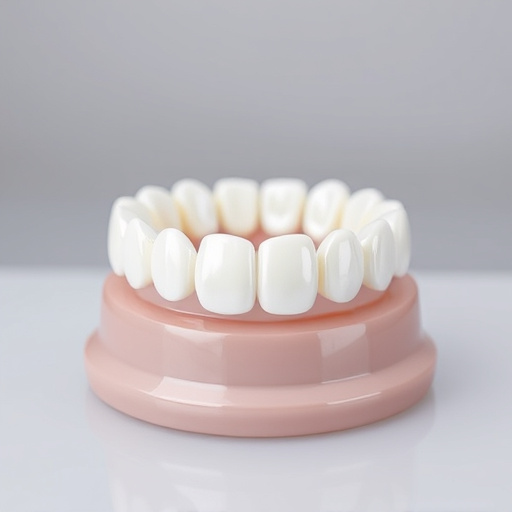
Laser dentistry treatment offers minimally invasive alternatives to traditional dental procedures, u…….
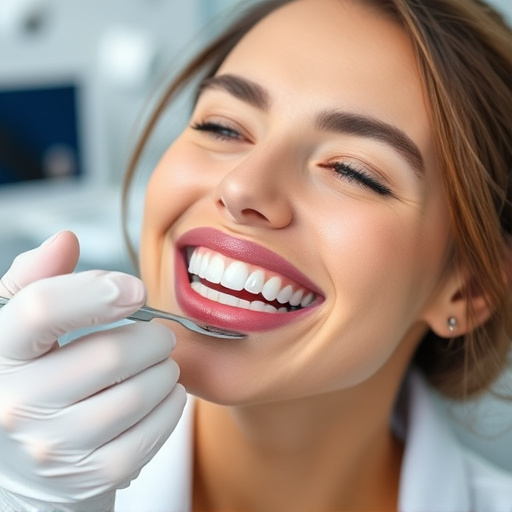
Laser dentistry treatment offers safe, precise, and minimally invasive procedures for various dental…….
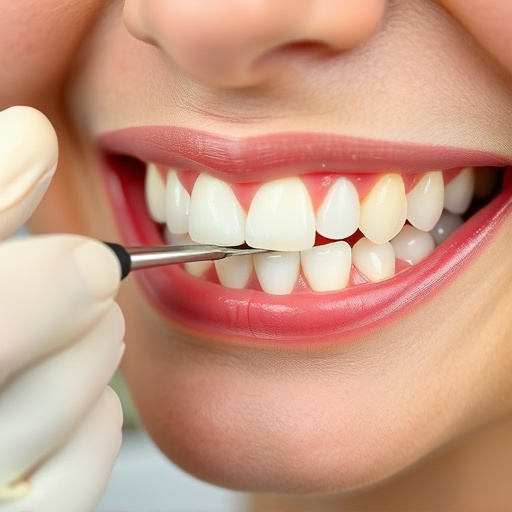
Laser dentistry treatment revolutionizes dental care with precise, gentle approaches to various proc…….

Laser dentistry treatment offers remarkable precision, minimal discomfort, and faster recovery times…….
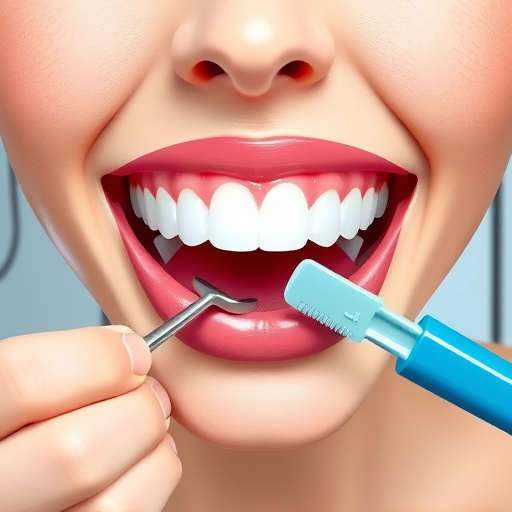
Laser dentistry treatment transforms dental care by offering precise, minimally invasive alternative…….
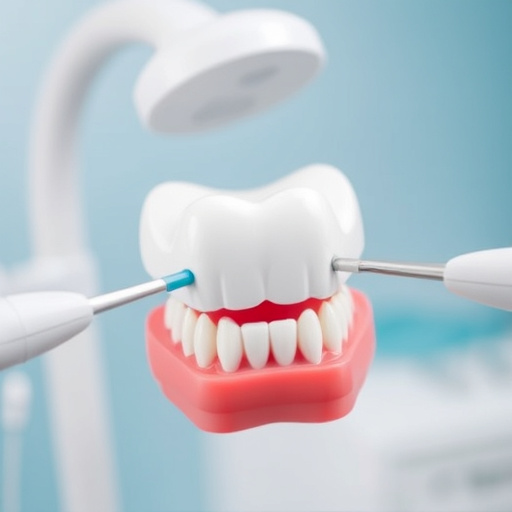
Laser dentistry treatment revolutionizes dental care with precise, non-invasive procedures using hig…….
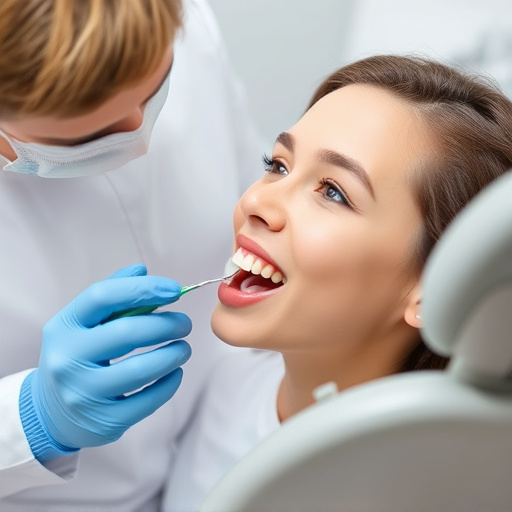
Laser dentistry treatment revolutionizes dental care with minimally invasive procedures, offering pr…….
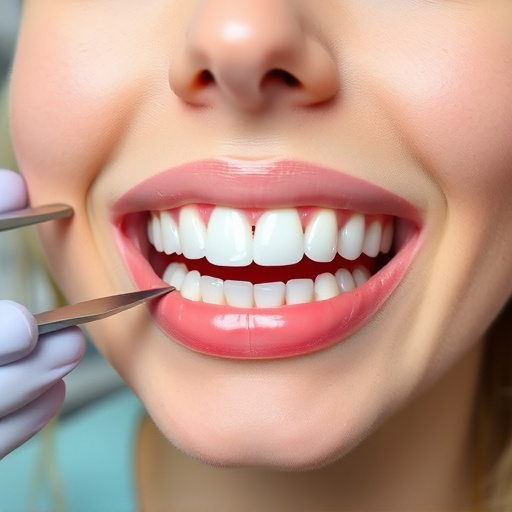
Laser dentistry treatment revolutionizes dental care with precise, gentle techniques for various pro…….
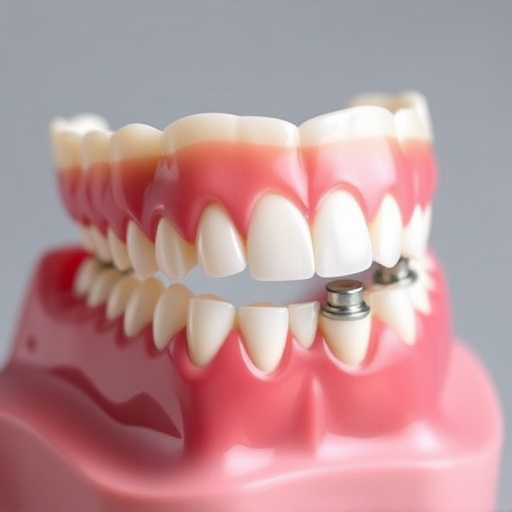
Laser dentistry treatment offers precise, non-invasive solutions for oral health issues, from gum di…….